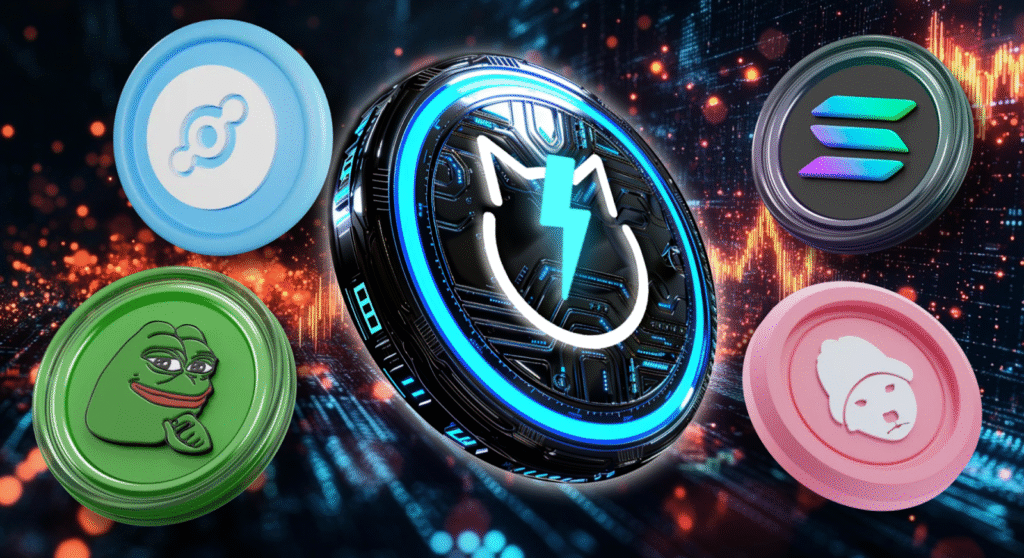By exhibiting a significant increase even while altcoins experience continuous declines, Web3 gaming has bucked more general market trends. By 2025, blockchain gaming will no longer be considered a speculative endeavor. Rather, it has grown into a vibrant, quickly changing sector attracting investors, developers, and consumers all around. Web3 gaming surge 2025 is booming against a challenging digital asset market, with a 50% rise in activity and over 7 million daily active wallets recorded in early 2025.
Driving the Web3 Gaming Explosion
Several important elements are driving the remarkable increase in Web3 gaming. Many blockchain games developed and supported throughout the bull run of 2021–2022 are now finally releasing with more consistent economies and refined gameplay. Not only do these games serve as token-distribution systems, but they also aim to entertain and retain participants. Web3 games are increasingly competing with established games for quality and player engagement by incorporating blockchain features such as digital ownership, in-game economies, and verified rewards.
The junction of artificial intelligence and blockchain-based gaming serves as yet another motivating factor. Artificial intelligence today creates more flexible and engaging game settings. Leading projects like artificial intelligence-powered non-player characters (NPCs), dynamic in-game events, and procedurally created narratives are changing interactive entertainment. These developments draw players seeking more control over their virtual identities and assets and more intense experiences.
Part Blockchain Infrastructure Plays
Furthermore, the fundamental infrastructure supporting Web3 gaming has greatly improved. Layer-2 scaling solutions, such as Optimistic Rollups and ZK Rollups, make faster, less expensive, and safer transactions possible. On big blockchains like Ethereum, these technologies address long-standing issues such as poor processing speeds and high gas costs. Meme Tokens Gain, Developers can thus create intricate gaming environments without sacrificing performance or decentralizing ability.
Concurrently, game creation platforms like Unity and Unreal Engine have started more widely supporting Web3 integrations. Thanks to this backing, blockchain games can have the same top-notch graphics and gameplay dynamics players want. Such advancements are absolutely vital for onboarding traditional gamers who might be dubious about blockchain technology but are attracted by familiar experiences enhanced by digital ownership.
The market is driven by regional momentum.
The Web3 gaming industry is becoming increasingly global, with various regions contributing to its growth in different ways. Although the Asia-Pacific region is fast rising as a major player, North America now has the largest share of the blockchain gaming market. Nations such as South Korea, Japan, and the Philippines are leading the way in blockchain game development and player acceptance. The large number of mobile gamers in the area and cultural awareness of microtransactions make it particularly ready for Web3 integration.
According to estimates, the blockchain gaming business will grow to around $9 billion in 2025 and top $100 billion in the following ten years. These projections capture a high conviction in the long-term survival of the Web3 gaming model. Investors are noticing and funding new projects and infrastructure businesses aiming to change the way games are created, consumed, and profitably sold.
Changing Monetization Strategies Outside
The change in monetizing strategies in blockchain gaming marks one of the most significant developments in 2025. Although early ideas like play-to-earn were fascinating, they were sometimes unsustainable. Developers are using more balanced play-through-and-earning systems nowadays that give user retention and sustainable tokenomics first priority. Without inflating the token supply or sacrificing game quality, these systems pay users for their time and contributions.

In the Web3 gaming environment, sponsorships and advertising are increasingly becoming major sources of income. Blockchain games are developing relationships with companies trying to target tech-savvy, involved audiences, much like the conventional esports sector. These alliances give more utility and exposure to in-game digital assets in addition to funding development.
Why Web3 Gaming Now Matters
Web3 gaming’s ongoing success in the face of more general challenges in the Bitcoin industry points to a significant change. It is not a passing fad driven by speculation or hype here. In terms of design, value exchange, and player interaction with virtual worlds, games are fundamentally changing. Web-based gaming is about playing a part in the game’s development, not only about possessing a copy of it.
Players have greater power, developers enjoy more freedom, and communities are gaining a stronger voice in shaping experiences. Top 5 Web3 Games, These structural shifts are making gaming more inclusive, dispersed, and financially powerful than it has ever been.
Participate in the game’s future.
Investigating what Web3 gaming has to offer is best done now. This area provides space for everyone, regardless of your interests—a developer trying to expand on blockchain, Web3 gaming surge 2025, gamer seeking fresh experiences, or investor searching for new prospects. Stay educated, join gaming forums, and play recently released games. Gaming is building its future right now on the blockchain.


